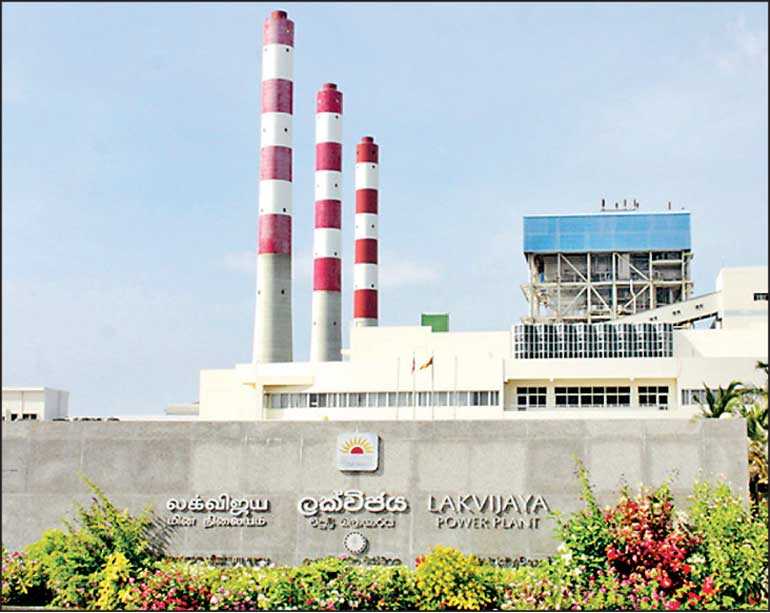Friday Mar 14, 2025
Friday Mar 14, 2025
Saturday, 29 December 2018 00:10 - - {{hitsCtrl.values.hits}}

By Shanika Sriyananda
Having found a high level of mercury exposure among women in Kalpitiya Peninsula, the Centre for Environmental Justice (CEJ) is urging the Government to test the levels of mercury in the coal supplied to the Chinese-built Lakvijaya Coal Power Plant (LCPP).
With the shocking revelation that over 80% of women between the ages of 18 to 44 living around the Puttalam lagoon and in the vicinity of the LCPP have found mercury in their hair exceeding the reference level of 1ppm (parts per million), the CEJ has also recommended that the Government starts monitoring the environmental mercury in air, water, soil and food sources around the Puttalam Lagoon and in Kalpitiya. The local research, done by the CEJ for a global study conducted by IPEN, a network of Non-Governmental Organisations, has revealed that the residents in Norochcholai, Paniadiya, Narakkalliya and around the Puttalam town area and in the vicinity to the lagoon are exposed to dangerous levels of mercury.
“Although the mercury level in coal should be tested before burning coal, the LCPP does not seem to be conducting the tests for mercury. The study was focused on the mercury contamination through lagoon fish consumption,” CEJ Executive Director and Senior Environmental Scientist Hemantha Withanage said.
He said that it was difficult to predict the toxicity due to mercury in the studied population without conducting proper blood or urine tests for mercury but it was very clear that the people were vulnerable to mercury contamination from the surrounding environment.
The sample tests were conducted by IPEN, which is working in over 100 countries to reduce and eliminate the harm to human health and the environment from toxic chemicals, and the Biodiversity Research Institute (BRI), which measured mercury in hair samples in its laboratory in Gorham, Maine, USA. The CEJ has collected 21 hair samples from Norochcholai and 15 from Puttalam area.
Withanage said that of the total 28 women who participated in the study, 17 from Norochcholai and 11 from Puttalam had mercury in their hair exceeding the internationally-recognised reference level of 1 ppm total mercury.
He claimed that mercury in fish could be the closest source for the high level of mercury found in their hair.
According to the CEJ study, the women who participated in the study had eaten four to 15 meals of lagoon fish per week. “It is known that the lagoon gets contaminated with effluents from the coal power plant and fly ash due to strong winds in the area,” Withanage said.
Discover Kapruka, the leading online shopping platform in Sri Lanka, where you can conveniently send Gifts and Flowers to your loved ones for any event including Valentine ’s Day. Explore a wide range of popular Shopping Categories on Kapruka, including Toys, Groceries, Electronics, Birthday Cakes, Fruits, Chocolates, Flower Bouquets, Clothing, Watches, Lingerie, Gift Sets and Jewellery. Also if you’re interested in selling with Kapruka, Partner Central by Kapruka is the best solution to start with. Moreover, through Kapruka Global Shop, you can also enjoy the convenience of purchasing products from renowned platforms like Amazon and eBay and have them delivered to Sri Lanka.
Discover Kapruka, the leading online shopping platform in Sri Lanka, where you can conveniently send Gifts and Flowers to your loved ones for any event including Valentine ’s Day. Explore a wide range of popular Shopping Categories on Kapruka, including Toys, Groceries, Electronics, Birthday Cakes, Fruits, Chocolates, Flower Bouquets, Clothing, Watches, Lingerie, Gift Sets and Jewellery. Also if you’re interested in selling with Kapruka, Partner Central by Kapruka is the best solution to start with. Moreover, through Kapruka Global Shop, you can also enjoy the convenience of purchasing products from renowned platforms like Amazon and eBay and have them delivered to Sri Lanka.